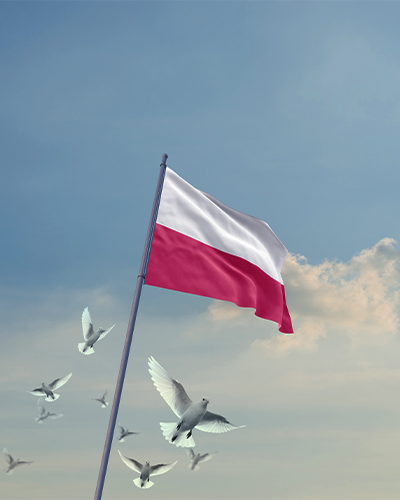What’s the True Key to Customer Loyalty in Hotels?

Table of Contents
Are loyalty schemes enough to ensure customer loyalty?
In the fiercely competitive landscape of the hospitality industry, the battle for customer loyalty is unceasing. Hotels go to great lengths to secure the favour of guests, and in this quest, loyalty schemes have become the norm. But do these loyalty schemes guarantee unwavering customer loyalty? Or is there something more profound at play?

While loyalty programs are undoubtedly a powerful tool in the arsenal of hotels, they are only part of the equation. In this blog post, we will explore the intricate relationship between loyalty schemes and genuine customer loyalty, as well as delve into the perspectives of various researchers to answer the question: ‘Are loyalty schemes enough to ensure customer loyalty?’ But we won’t stop there – stay till the end where we provide some innovative ideas so that your loyalty program can truly stand out.
The Essence of Loyalty Schemes
In today’s highly competitive hotel industry, customers are more discerning than ever; they seek better deals, expect top-notch amenities, leave reviews, and eagerly share their experiences with hotels. This is where loyalty programs, known as rewards or frequent-guest programs, have stepped in and promise exclusive benefits and perks, encouraging guests to return and climb the loyalty program tiers to reach elite levels. The concept has become a standard practice in the industry, as the firms grapple with the challenge of providing differentiated services and elevating switching costs, and have, as a result, revolutionised the way customers interact with hotels.
The promise is clear: enhanced customer satisfaction, loyalty, and improved long-term financial performance. Functional, psychological, and external values are key factors in explaining how loyalty program values influence customer perceptions, however. Therefore, understanding how customers perceive the value of each loyalty program is imperative for the success of these initiatives. The literature has established a clear relationship between the perceived value of a loyalty program and customer loyalty in the context of hotels, concluding that positive perceptions of loyalty programs can indeed influence customer loyalty. In addition, when customers perceive a loyalty program as more attractive than others, they are more likely to remain loyal, even if they are members of multiple loyalty programs.
Marriott Rewards: Where It All Began
The history of loyalty programs in the hotel industry can be traced back to 1983 when Marriott introduced its loyalty program, Marriott Rewards. This initiative, inspired by airline frequent flyer programs, marked the beginning of the proliferation of loyalty programs in the hospitality sector, and it is, perhaps, the most notable example of the financial potential that they can unlock for hotel businesses.
In the J.D. Power 2017 Hotel Loyalty Program Satisfaction Study, Marriott Rewards ranked the highest in overall customer satisfaction and managed to bring in an impressive total revenue of $22.89 billion, the highest among major hotel chains. This example illustrates how hotels can achieve remarkable success in their business endeavours by attracting customers and increasing revenues through effective loyalty programs.
Understanding The Competitive Landscape
Simultaneously, the emergence of third-party booking websites, commonly referred to as online travel agents (OTAs) like Expedia and Booking.com, has led to conflicts with the hotel industry since – as the former has gained a larger share of the market – it has driven hotel companies to rely more heavily on them for bookings. As a result, the commissions hotels have to pay to them have escalated, reaching at times up to 30% of room rates, creating an immense financial challenge.
Additionally, the rise of home-sharing platforms such as Airbnb has introduced new competition and has put pressure on hotels to increase their room rates or occupancy, as customers now compare the price and value offered by both Airbnb and hotels.
To make things worse for the hotel industry, OTAs and Airbnb have also introduced their own loyalty programs, which are becoming increasingly user-friendly and rewarding. Thus, it has become imperative for hotel firms to differentiate themselves by offering distinctive loyalty programs that create high levels of customer retention through enhanced satisfaction and value for members. While they may appear to require a significant budget, loyalty programs offer hidden advantages such as reduced expenses compared to the commissions paid to online OTAs.
Therefore, hotel firms must develop powerful loyalty programs to avoid competing with these disruptive forces and to entice customers to book directly by offering special discounts or benefits to loyal members.
The Million-Dollar Question: Are Loyalty Schemes Enough to Establish Customer Loyalty Alone ?
While some hail loyalty programs as the holy grail of customer loyalty, a debate rages on whether they alone are sufficient to create it. Various potential pitfalls in loyalty schemes have been pointed out, including low levels of commitment, an exclusive focus on monetary rewards, and concerns related to privacy, while it has been said that loyalty programs – often perceived as identical – fall short in creating an emotional bond and their efficiency is sometimes overestimated.
Another major factor is the actual point accumulation that these programs normally employ in order to promote the users to the next tier of their scheme with the corresponding rewards and benefits. For example, business travellers are able to accumulate points more easily through accommodations, as they travel away from home frequently and their expenses are typically covered by their employers or clients. In contrast, leisure travellers might need to acquire benefits by using co-branded credit cards or transferring accrued points to preferred airline miles due to the difficulty of meeting traditional requirements of eligible stays in order to unlock complimentary offerings or reach a higher tier.
Therefore, hotel firms should focus on understanding the characteristics of loyalty programs that are relevant to each customer, ensuring that customers perceive all the values of the loyalty program. So, to answer the question, a well-structured loyalty program unquestionably contributes to building strong customer brand loyalty but it is only part of the equation.
Building Genuine Loyalty
In marketing, loyalty is a critical success factor because retaining existing customers is more cost-effective than acquiring new ones. Particularly in the hospitality industry, the emotional attachment of customers to service providers is a crucial dimension of attitudinal loyalty, which is when a customer chooses to be loyal because of a positive brand preference.
To ensure that customers are genuinely loyal, however, hotels must go beyond points accumulation. Customer satisfaction and affective commitment are key to building lasting bonds and provide the degree of emotional attachment that is needed in order to create a deeper and more personal relationship with the customers, which will eventually result in said customers’ loyalty towards the business. In the context of the hospitality industry, the relationship between customer satisfaction and loyalty unequivocally indicated that highly satisfied customers represent the most potent marketing resource for hotels and enable cost savings through their loyalty, as they are more likely to remain loyal, engage in positive word-of-mouth promotion, make more purchases, and pay higher prices.
Affective commitment plays a pivotal role in supporting the development of customer relationships and is closely linked to customers’ intentions to switch to other service providers. This concept refers to the employees’ emotional attachment to their workplace. In the hotel context, it means that employees are satisfied with their job, take pleasure in working at the hotel and feel “at home”. Why is this important? Because when employees are satisfied, and their values align with those of the hotel business they are employed at, they are willing to provide exceptional service that will create a pleasant experience for customers and amplify their satisfaction. Thus, if customers have an unpleasant experience that does not satisfy them, they are definitely more prone to switch to another business.
Crafting a Loyalty Scheme That Works
Taking all the aforementioned into consideration, a loyalty program should be meticulously designed to match customers’ preferences and ultimately enhance their satisfaction, regardless of the approach. When customers perceive the value of a loyalty program and the emotional commitment it fosters, along with the satisfaction it provides and high costs associated with switching to another loyalty program, they are more likely to exhibit brand loyalty and become loyal patrons of the hotel.
Here are some innovative ideas in order to design a loyalty program that stands out or give your existing one a little shake-up:
- Continuous Experimentation
Approach your loyalty initiative with a mindset of constant experimentation and enhancement. Utilise A/B testing to explore new features and understand customer engagement, all while minimising risks associated with implementation. - Holistic Rewards Catalog
When planning your rewards catalogue, aim to incorporate memorable experiences. If your customer base has diverse interests, consider including various experiences to appeal to a broader audience and work with partners to offer a wider range of experiences that align with your brand and strategy. - Segmented Community Groups
Consider utilising community groups within the loyalty program to focus on specific customer segments based on their interests. By doing so, you can create a more personalised and engaging experience for each group, fostering a sense of community. - Sustainability Integration
Integrate sustainability and corporate social responsibility (CSR) into your rewards program that will allow customers to contribute to positive causes alongside your brand, fostering a sense of shared values and social impact. - Adapting to “Bleisure”
As remote work blurs the lines between business and leisure travel, cater to the emerging trend of “bleisure” by offering amenities such as comfortable workspaces, free high-speed WiFi, and co-working spaces. This ensures guests can seamlessly blend work and relaxation during their stay, leading to longer and more enjoyable visits. - Data-Centric Loyalty Programs
Leverage customer data to enhance loyalty programs. With the increasing control customers have over their data, use personalised incentives and loyalty programs to demonstrate the value of sharing information, so that you can make data-driven decisions to better understand and meet customer needs. - Omni-channel Communication
Embrace multiple communication channels through omni-channelling to strengthen bonds with customers. Utilise advanced CRM technology for a 360-degree view of the customer, ensuring timely and relevant communication and consider customer preferences for communication channels to enhance the overall experience. - Digitalisation for Engagement
Emphasise digitalisation in loyalty programs to streamline processes and boost member engagement with hotel brands to create seamless and efficient interactions, making it easier for customers to engage with and benefit from loyalty programs. - Collaborative Loyalty Programs
Adopt collaborative loyalty models that offer members greater choices across brands, destinations, and reward redemption options by forging partnerships with diverse businesses, such as other hotels, airlines, or mobility solutions, to enhance the value proposition for loyalty program members.
Conclusion
Loyalty schemes are an integral part of the modern hotel industry, and for good reason. However, they alone do not guarantee unwavering customer loyalty. Exceptional customer service remains the cornerstone of loyalty, ensuring that guests return not solely for the perks but for the emotional bond they share with a hotel. The challenge for hotels is to craft loyalty programs that enhance customer satisfaction and pair them with experiences that customers treasure. In this evolving landscape, the most successful hotels are those that master the delicate art of blending loyalty schemes with the heartwarming embrace of exceptional customer service.
Bibliography
Berman, B., (2006). ‘Developing an effective customer loyalty program.’ Calif. Manage. Rev. 49 (1), 123–148.
Blal, I., Singal, M., Templin, J., (2018) ‘Airbnb’s effect on hotel sales growth’. Int. J. Hosp.
Manag. 73, 85–92.
Bolton, R.N., Kannan, P.K., Bramlett, M.D., (2000). ‘Implications of loyalty program membership and service experiences for customer retention and value’. J. Acad. Mark. Sci. 28 (1), 95–108.
Bowen, J.T., Chen, S.L., (2001). ‘The relationship between customer loyalty and customer satisfaction’. Int. J. Contemp. Hosp. Manage. 13 (5), 213–217.
Effler, G., (2017). Hotel Loyalty Program Partnerships Critical to Customer Satisfaction (November 29) Retrieved from. J.D. Power finds. http://www.jdpower.com/pressreleases/jd-power-2017-hotel-loyalty-program-satisfaction-study.
Feinstein, E., (2018). OTA’s vs. Direct Hotel Bookings. Which Is the Leading Trend for 2018? (February 23) Retrieved from https://www.traveldailynews.com/post/otasvs-direct-hotel-bookings-which-is-the-leading-trend-for-2018.
Han, H., Ryu, K., (2009). ‘The roles of the physical environment, price perception, and customer satisfaction in determining customer loyalty in the restaurant industry’. J. Hosp. Tour. Res. 33 (4), 487–510.
Hoffman, J.L., Lowitt, E.M., (2008). ‘A better way to design loyalty programs’. Strategy Leadersh. 36 (4), 44–47.
Hu, H.H., Huang, C.T., Chen, P.T., (2010). ‘Do reward programs truly build loyalty for
lodging industry?’ Int. J. Hosp. Manag. 29 (1), 128–135.
Hutchinson, K., Donnell, L.V., Gilmore, A., Reid, A., (2015). ‘Loyalty card adoption in SME retailers: the impact upon marketing management’. Eur. J. Mark. 49 (3/4), 467–490.
Kim, B., Shi, M., Srinivasan, K., (1997). ‘Colluding Through Capacity Reduction: a Rationale for Frequent Flyer Program’. Working Paper. Carnegie Mellon University, Pittsburgh, PA.
Kim, M., Vogt, C.A., Knutson, B.J., (2015). ‘Relationships among customer satisfaction,
delight, and loyalty in the hospitality industry’. J. Hosp. Tour. Res. 39 (2), 170–197.
Kooa, B., Yub, J., Han, H. (2020) ‘The role of loyalty programs in boosting hotel guest loyalty: Impact of switching barriers’ International Journal of Hospitality Management 84, 2020, 102328, ISSN 0278-4319, https://doi.org/10.1016/j.ijhm.2019.102328.
Koval, G. (2023) ‘Revitalizing Hotel Loyalty Programs for Evolving Consumer Trends’ LinkedIn article, May 29, Viewed 13 November 2023, https://www.linkedin.com/pulse/revitalizing-hotel-loyalty-programs-evolving-consumer-trends/
Lewis, M., (2004). ‘The influence of loyalty programs and short-term promotions on customer retention’. J. Mark. Res. 41 (3), 281–292.
Marriott International, Inc., (2017). Form 10-K (December 31) Retrieved from. https://
www.sec.gov/Archives/edgar/data/1048286/000162828018001756/marq42017x10k.htm.
Mattila, A.S., (2006). ‘How affective commitment boosts guest loyalty (and promotes frequent-guest programs)’. Cornell Hotel Restaur. Adm. Q. 47 (2), 174–181.
Mizerak, J. (2023) ‘Mission: Loyalty – Most Innovative Loyalty Program Ideas to Stand Out’, Antavo Enterprise Loyalty Cloud. Retrieved from https://antavo.com/blog/loyalty-program-ideas-mission-loyalty/
Myung, E., Li, L., Bai, B., (2009). ‘Managing the distribution channel relationship with EWholesalers: hotel operators’ perspective’. J. Hosp. Mark. Manage. 18 (8), 811–828.
Raab, C., Berezan, O., Krishen, A.S., Tanford, S. (2016). ‘What’s in a word? Building program loyalty through social media communication.’ Cornell Hosp. Q. 57 (2), 138–149.
Reichheld, F.F., Sasser, J.W., (1990). ‘Zero defections: quality comes to services’. Harv. Bus. Rev. 68 (5), 105–111.
Reinartz, W.J., Kumar, V., (2000). ‘On the profitability of long-life customers in a noncontractual setting: An empirical investigation and implications for marketing.’ Journal of marketing 64 (4), 17–35.
Tanford, S., Raab, C., Kim, Y.S., (2011). ‘The influence of reward program membership and commitment on hotel loyalty’. J. Hosp. Tour. Res. 35 (3), 279–307.
U.S. Securities and Exchange Commission (2018). Company filings. Retrieved from https://www.sec.gov/edgar/searchedgar/companysearch.html.
Wirtz, J., Mattila, A.S., Oo Lwin, M., (2007). ‘How effective are loyalty reward programs in driving share of wallet?’ J. Serv. Res. 9 (4), 327–334.
Xie, L., Chen, C.C., (2014). ‘Hotel loyalty programs: how valuable is valuable enough?’ Int. J. Contemp. Hosp. Manage. 26 (1), 107–129.
Xie, K.L., Xiong, L., Chen, C.C., Hu, C. (2015). ‘Understanding active loyalty behavior in hotel reward programs through customers’ switching costs and perceived program value’. J. Travel Tour. Mark. 32 (3), 308–324.
Targeting the Right Audience: Hotel Guest Personas
The Business Traveller Table of Contents What Are Hotel Guest Personas? In today’s highly competit
Research: Polish Market’s Demand for Greece
Table of Contents Introduction In the realm of tourism, understanding market dynamics is crucial for
The Power of UGC for Hotels: Authenticity That Drives Engagement
By encouraging guests to share their moments, you’re not just getting content—you’re building



